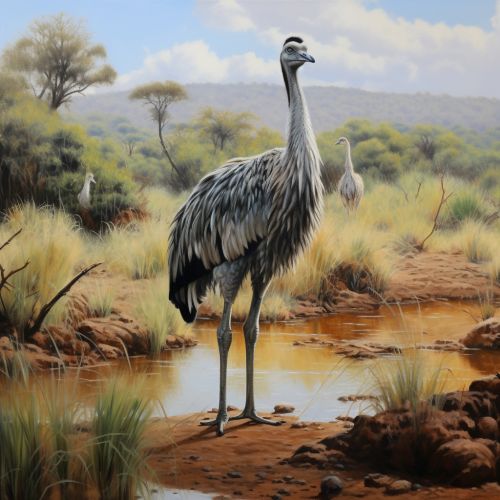Greater Rhea
Taxonomy and Etymology
The Greater Rhea (Rhea americana) belongs to the family Rheidae, which is part of the order Struthioniformes. This order also includes other large flightless birds such as the Emu and the Ostrich. The term 'Rhea' was derived from the Greek goddess Rhea, who is known as the mother of the gods in Greek mythology.


Description and Anatomy
The Greater Rhea is the largest bird found in South America, with males reaching up to 1.5 meters in height and weighing between 20 to 27 kilograms. Females are slightly smaller, typically weighing between 18 to 25 kilograms. The bird is characterized by its large, flightless body, long legs and neck, and a small head with a pointed beak. The plumage is predominantly grey or brown, with white feathers on the belly and the tips of the wings.
Distribution and Habitat
Greater Rheas are native to the open grasslands and wetlands of South America. Their range extends from northeastern Brazil, through Bolivia, Paraguay, and Uruguay, to Argentina. They prefer habitats with a mix of grassland and scrub, which provide both feeding grounds and cover from predators.
Behaviour and Ecology
Greater Rheas are primarily herbivorous, feeding on a variety of plant material such as leaves, fruits, seeds, and roots. They also consume insects, small vertebrates, and bird eggs when available. They are known to be nomadic, moving in response to food availability and breeding opportunities.
Reproduction
The breeding season for Greater Rheas typically begins in August and lasts until January. Males establish territories and attract multiple females with a deep, booming call. After mating, the females lay their eggs in a communal nest, which is guarded and incubated by the male. The male continues to care for the chicks after they hatch.
Conservation Status
The Greater Rhea is currently listed as Near Threatened on the IUCN Red List. The primary threats to the species include habitat loss due to agriculture and hunting for their feathers and meat.
Cultural Significance
In South America, the Greater Rhea holds cultural significance for many indigenous communities. Its feathers are used in ceremonial dress, and its meat is a source of food.
